The events of 2020 forced organizations of all sizes to fast-track digital transformation initiatives. With so many businesses moving the full customer journey online, customer expectations shifted along with business models. Enterprise organizations have entered an entirely new era of customer experience that comes with a new set of customer service challenges. The future of CX isn’t about meeting customer expectations, but exceeding them.
According to Ron Kaufman, a thought leader in the customer service industry and bestselling author of books like “Uplifting Service” and the “Up Your Service” series, “Exceeding expectations is where satisfaction ends and loyalty begins.”
Business leaders know customer loyalty is a primary goal. Studies have shown that acquiring a new customer can cost as much as 25% more than retaining an existing customer and have a major impact on revenue. The key to building loyalty among your customer base: Exceptional customer experience.
The future of customer experience means meeting customers where they are
In its State of the Connected Customer report, Salesforce discovered that 75% of the 6,700 consumers it surveyed expected a consistent experience no matter how they interacted with a brand: Over email, on social, over the phone or in person. More importantly, 76% of the survey respondents reported it was “easier than ever to take their business elsewhere — switching from brand to brand to find an experience that matches their expectations.”
Consumers want a seamless customer journey, free of impersonal interactions, frustrating wait-times and poor customer service. Many of your customers may not be able to leave the house. Some people want to talk on the phone, while others prefer texting apps. The key to exceeding your customers’ expectations is knowing which channel they prefer and adapting to their needs as quickly and effectively as possible. As consumer behaviors shift, so must your customer service models.
Adapting to your evolving customer will help you continue to create great Experiences for them.
The Data: Industry reports prove consumers use a wide range of digital channels
According to Forrester, “Customers contact enterprise organizations at a greater rate over a greater number of channels — shifting between them seamlessly and even using channels simultaneously.” Here’s what the data shows us: Of all the self-service tools, customers will frequently use a brand’s FAQ or Customer Support page before reaching out.
Sixty-percent of consumers prefer digital self-serve platforms for simple customer service inquiries, using CX tools like website chat functions, mobile apps, social accounts, and more. In fact, in its 2018 Customer Service Trends report, Forrester found that more than 30% of consumers have used Twitter to contact a company over a customer service issue. In 2017, American Express’ Customer Service Barometer report showed 35% of customers were using social channels to resolve customer service issues, up from 23% in 2014.
Forrester’s trends report claimed email was the most commonly used digital customer service channel. But, last year, Gartner predicted 70% of customer interactions will involve machine learning applications, chatbots and mobile messaging by 2022. For companies that do rely on chatbots, Live Chat says customer expectations for response times are much higher than with email, with the average wait-time for a response at 45-seconds.
The most true story across these customer service facts and figures is that consumers use multiple digital channels — and they expect the brands they engage with to do the same.
The Customer Journey Map: The key to exceeding customer service expectations
So how can a brand be everywhere all at once? To exceed customer service expectations, enterprise organizations need a sophisticated customer experience platform that plugs into the multiple touch points along the customer journey to monitor, optimize and measure customer experiences.
But before implementing a CX technology platform, it is crucial to map out your brand’s customer journeys so that you can identify all the potential customer interactions and determine which have the biggest impact on your business outcomes. (The number of customer journeys you may have depends on how many product lines and services your organization offers.)
Customer Journey Image
Experience.com’s own research shows that 70% of a customer journey is dictated by whether or not your customer feels they are being treated well along the way. CEO Scott Harris outlined the following seven steps to cover the basics for building out a single journey that puts a focus on your customer:
We know that 70% of the customer’s journey is dictated by how the customer feels they are being treated.
We know that 70% of the customer’s journey is dictated by how the customer feels they are being treated.
7 Steps to Build an Effective Customer Journey
1.) Set the customer objectives for the journey: Define what “next action” you want the customer to take as they move from discovery to purchase and beyond.
2.) Profile your customer personas and define their goals: What does your target audience look like? By defining your audience’s demographics and preferences, you can better align your customer journey to their digital behaviors.
3.) List all the interactions within the journey: By listing every potential interaction, you have a wide-angle lens that will allow you to focus on the touch points that provide measurable ROI.
4.) Identify the best measurement method for each interaction: Before you can optimize an engagement, you must be able to measure it.
5.) Identify the elements you want to show: You don’t have to give your customers everything all at once. By simplifying and streamlining your customer journey, you can dramatically accelerate the path to purchase.
6.) Make sure your team has moved through the customer journey to find any gaps: Think of this step as your customer journey map QA. You don’t know what you don’t know — the most effective way to find a gap is to move through the process as if you were a customer.
7.) Build a framework for a plan for any needed changes along the journey: Successful CX means being adaptable to changing market environments. If 2020 taught customer experience management professionals anything, it was that the customer journey for your entire customer base could change overnight.
Your organization’s customer journey map is a key component of our business’ overall success. It should be a living, breathing document maintained by your CX team, and updated as business decisions are made that impact how customers engage with your brand.
How to capture and operationalize actionable data to power your CX strategy
Once you have a customer journey map in place, you can begin to build out your customer experience program, implementing the necessary tools and platforms that will allow you to operationalize experiences in real-time. A high-performing, robust CX platform is a fundamental component of a thriving customer experience management strategy.
Without the right technology, your customer service team will not be able to keep up with or adapt to your customer’s evolving needs. Nor will you have the data or actionable insights to course-correct when a customer experience issue moves from being a challenge to a major problem. Enterprise organizations need CX platforms that do more than simply automate and elevate customer experiences — brands need a collaborative work environment, accessible to multiple business units, including the customer experience team, customer service agents, the marketing organization, HR and more.
To act on your customer experience data — and modify poor customer experiences in real-time — your CX platform should provide comprehensive reports with actionable insights. The more data you have, the better you can operationalize every aspect of your customer experience program.
The way customers search for products, make purchases and interact with customer service agents is constantly evolving. The massive rise in digital transformation during 2020 accelerated consumer adoption of digital customer service tools and there is no going back to pre-COVID customer behaviors. Consumers have an abundance of online buying options: If they do not receive the customer experience they expect, they will quickly turn to your competitor.
To thrive in this new normal, brands must commit to building exceptional customer experience strategies that adapt and evolve with their customers. Having the right CX platform in place won’t solve every challenge, but it will drastically improve how you manage customer experiences and help you exceed customer expectations.











